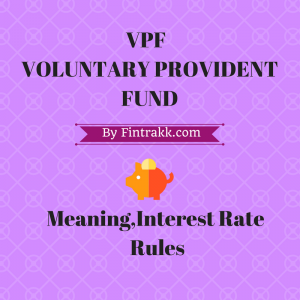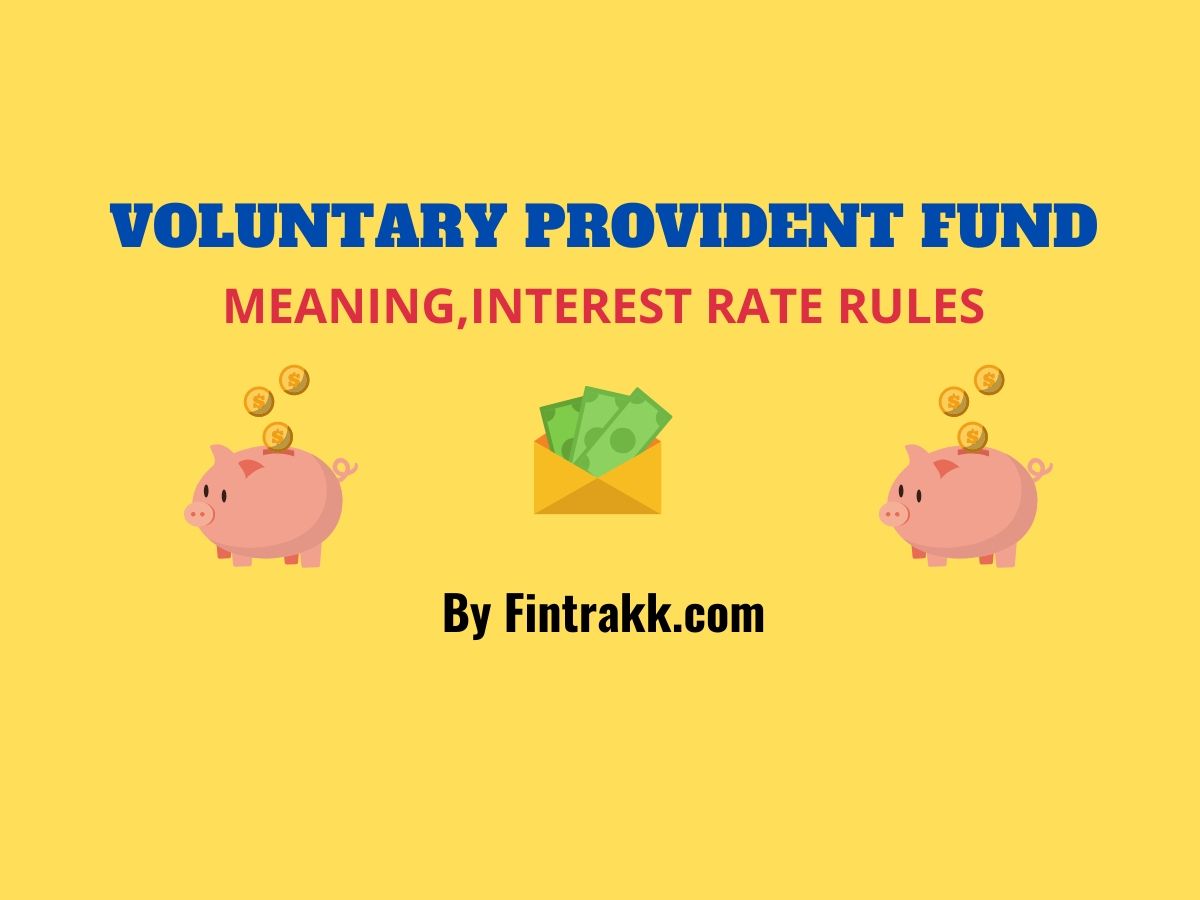If you are a salaried employee you might be familiar with the word VPF or Voluntary Provident Fund. Don’t worry even if you are not aware of it, we are here to make you understand all the details on VPF or Voluntary Provident Fund : Meaning, Interest rate, VPF Rules,benefits and so on.
After going through this blog, you will get an answer to all your queries like What is VPF ? What are the VPF rules ? What are the benefits of opening a VPF account ? How to open a VPF Account ?
What is VPF or Voluntary Provident Fund ?
As the name itself signifies,VPF is a type of Provident fund. Simply stated, VPF or Voluntary Provident Fund is an extended version of the Employee Provident Fund or EPF. Under VPF or Voluntary Provident Fund, the employee transfers a particular amount voluntarily to his VPF account on a monthly basis.
Let us explain this in simple words…
If you are in employment, the employer deducts a fixed amount every month i.e. 12% of your Basic Pay (including Dearness allowance) and transfers it towards your Employee Provident Fund Account or EPF Account. Further,the employer himself is also liable to contribute 12% (of Basic salary+ Dearness allowance) from his side towards your EPF account. This means both employer and employee contribute towards the EPF Account of the employee. Right !
Now, if as an employee you wish to contribute an amount over and above the minimum EPF voluntarily, you can do so by opening a VPF account. Hence,VPF is just an extension of your EPF account based on your voluntary contribution.
As per the EPF Act, an employee is allowed to make higher EPF contribution voluntarily at any rate he desires upto 100% of Basic pay plus Dearness Allowance.
But,remember, there is no liability on employer to contribute an extra amount for VPF i.e.employer won’t contribute towards your VPF account. An employer is not bound to contribute at the enhanced rate chosen by you, he has to only maintain the minimum basic requirement of 12% as stated above.
VPF is just a part of EPF and similar rules apply as in case of EPF or Employee Provident Fund.

Benefits of VPF or Voluntary Provident Fund :
- You earn a fixed rate of interest on the amount invested.
- This is controlled by the Government so considered a safe investment alternative.
- It is quite easy to open a VPF account, you can do so anytime you wish.You can smoothly get your EPF converted to VPF in a hassle free manner.
- If you are not comfortable contributing excess amount any further, you can easily to opt out of VPF. Your VPF account shall be converted back to your EPF account on your request.
- Interest rate is similar to EPF account that is quite high as compared to other traditional investment options like Savings account, Fixed deposits etc.
- A favourable long term investment option to add to your retirement fund.
- You can enjoy tax benefits similar to EPF. Don’t miss to checkout what tax benefits, as have been discussed below.
However, VPF is a safer long term investment since their is no risk of losing your investment just like in case of EPF and PPF. This is an attractive point for potential investors.
What is VPF Interest rate ?
Whenever we select an investment, the first thing that comes to our mind is, what we will get in return ? So,the interest rate plays an important role in deciding the type of investments we want to make.
VPF offers a good interest rate as compared to other traditional investment alternatives like Savings account, FDs etc. The interest rate on VPF is decided and revised by the Government from time to time. The present rate of interest is 8.65% per annum.
Further, the interest earned on VPF is tax free similar to interest earned on an EPF account.
How to open VPF Account ?
It is quite simple to convert your EPF Account to VPF Account. You just need to inform your employer(especially your HR department) in writing in the prescribed format. As an employee you need to declare the amount or percentage that you wish to contribute i.e. the enhanced contribution.
As such no timing has been specified for conversion of EPF to VPF account, but you need to discuss the same with your HR department for any specific timing for the Opt-in and Opt-out facility for VPF Account.
Tax benefits on VPF Account ?
VPF is regarded as a VPF also enjoys EEE(Exempt,exempt,exempt) nature just like PPF or Provident Fund and EPF which means :
- The Contribution made towards VPF is exempt Under Section 80C of The Indian Income Tax Act upto a maximum of Rs.1.5 lakhs only.
- Interest income on VPF Account is also tax free.
- Maturity proceeds are also exempt from tax provided you don’t withdraw the money before completion of 5 years of continuous service.
No doubt, VPF is a good tax saving investment option available to the salaried employees.But, the money gets locked in for a long duration and you can utilise the funds at the time of your retirement only. However, early withdrawal may be allowed if you are not in service for a period of 60 days.
VPF seems to be a great long term investment tool for risk averse investors who basically look for secure investment options. The following benefits of VPF make it a reliable investing option especially for the ones looking for risk-free investments.
Although, VPF is a great way to invest and build your retirement fund. But, for getting higher returns you anyways need to diversify your portfolio and move slightly towards the riskier investment options.
Do you think VPF is a good investment option to fit in your financial portfolio ? Or are you considering a combination of other investment alternatives to add to it. Do share your opinions on VPF or Voluntary Provident Fund in the comment section below.It may help our readers take the right decision.


If I am in need of money and I want to permanently withdraw a certain amount from VPF.
1. How can I do it ?( it’s only one year before I have started contributing in VPF).
2. If not can I take the temporary loan from VPF?
3. When can I stop the deductions of VPF.
4. Does VPF is in any sense related to GST?
If the employer has deducted my vpf and has not paid to the fund. Does he has to pay any penalty or interest to the fund for his delayed payment?
Good and detailed post.Keep up the good work.
Really useful info for salaried people like me.But, I am still confused where to put my extra money : traditional investment options or try something different like mutual funds and stocks for getting high returns.
Nice information.Thanks for sharing.
Hi,I am confused where to invest my money.I am a private sector employee,my employer deducts EPF from my salary.Now,I have some excess amount that I want to invest to get high returns.I don’t have any immediate requirements,but want to invest for my retirement.Can you suggest some good options.
Hi Ramesh,Its good you are thinking to invest your money.You can have a diversified portfolio consisting of safe options like PPF,FDs and if you can afford some risk you can invest in mutual funds.Mutual funds are subject to risk but you can explore high returns.Have a balanced portfolio to get good returns.
I feel one needs to try other investment options also to get high returns.One should invest in traditional options like PPF and VPF to some extent only.Some other options like mutual funds can be tried to get better returns.
Thanks for giving details on VPF. A useful articles for salaried people.I feel one should diversify investment to get high returns.